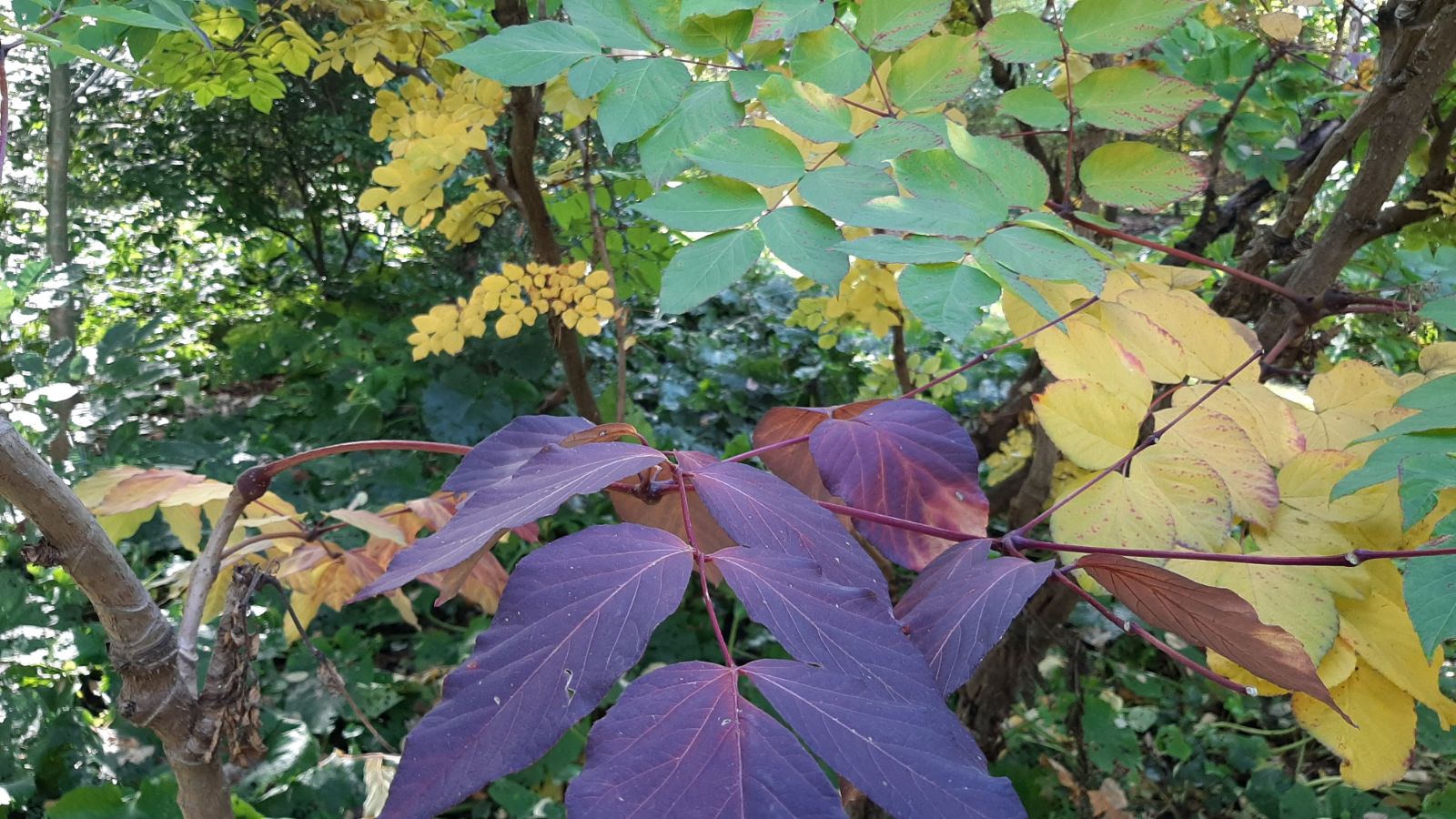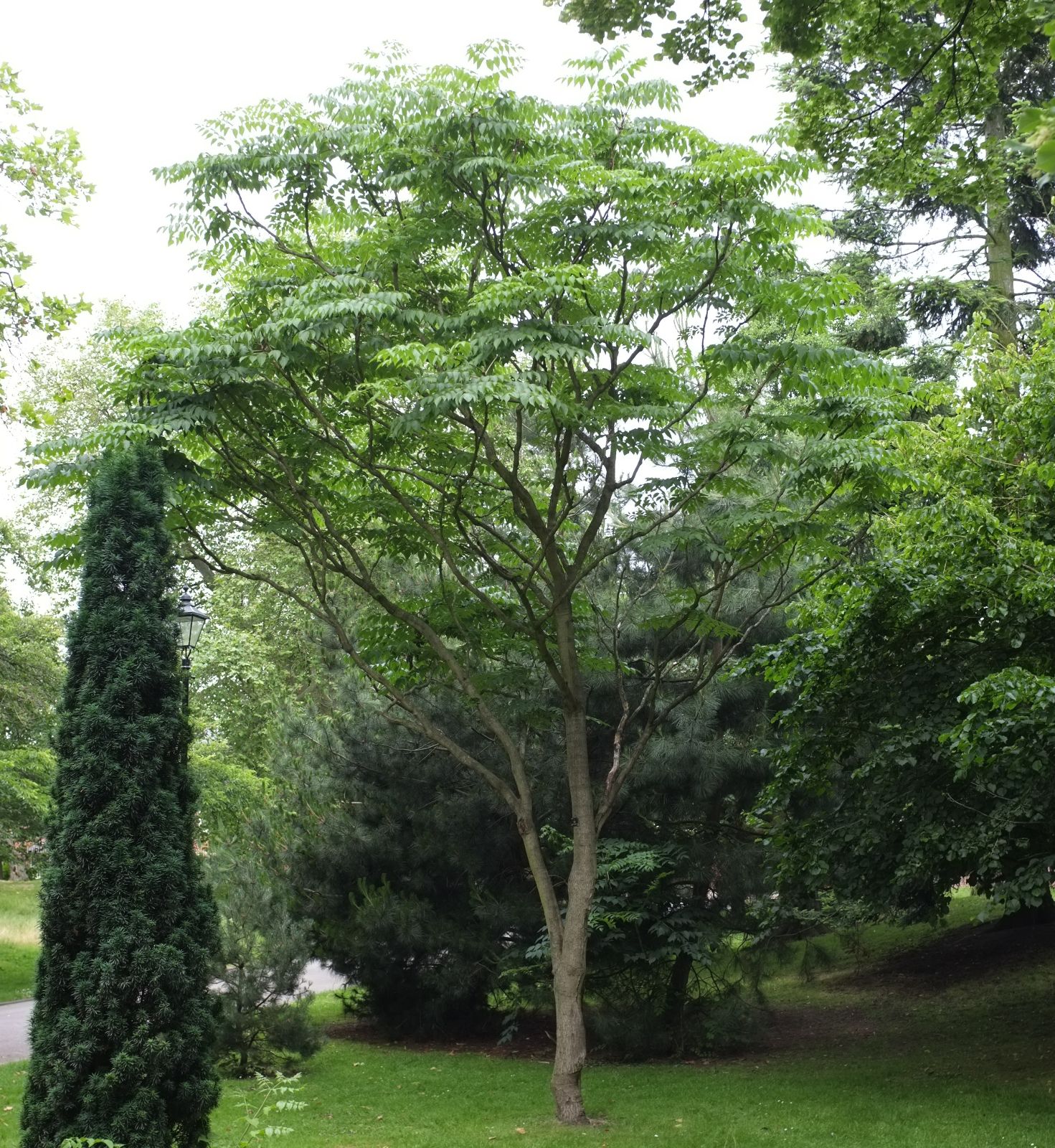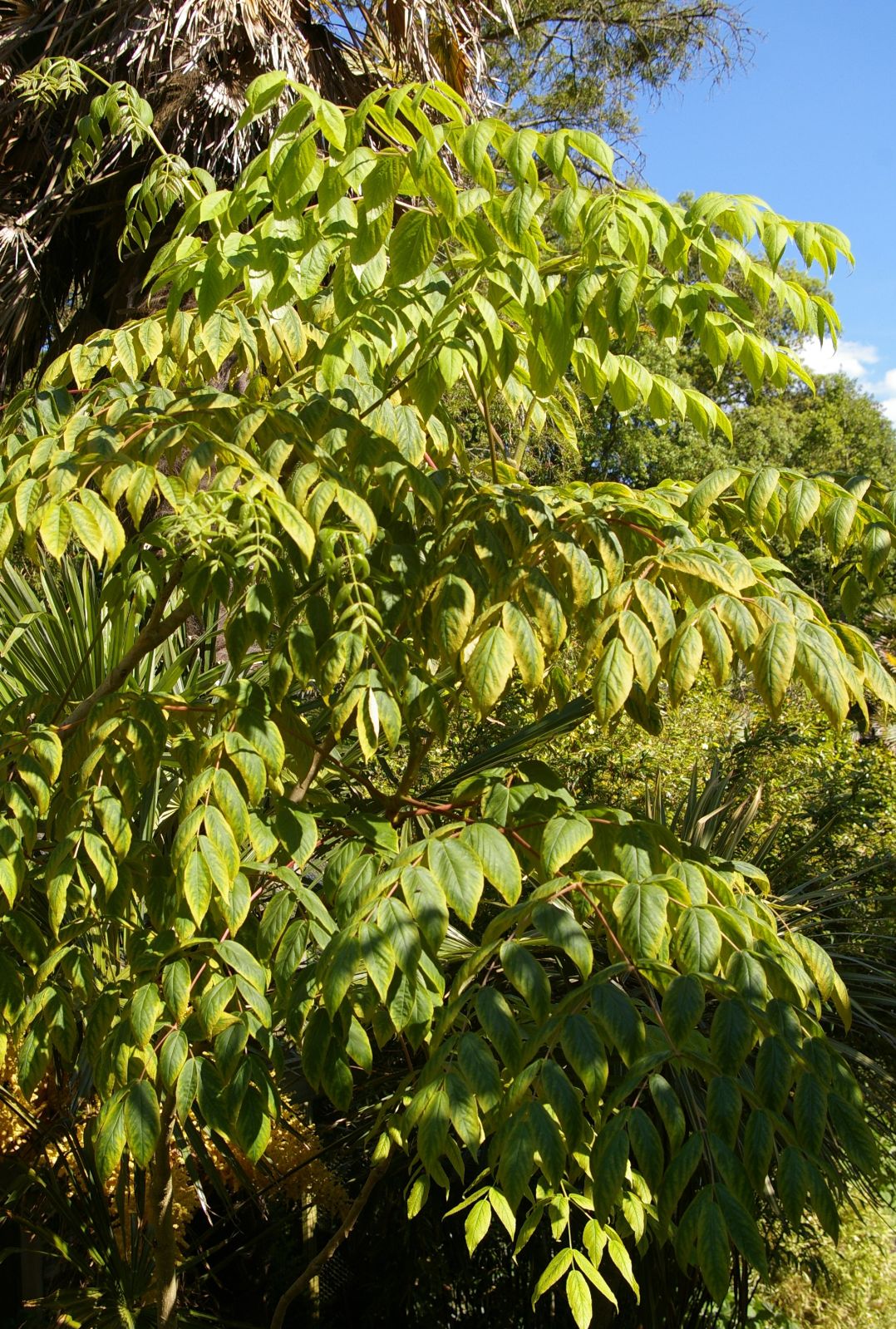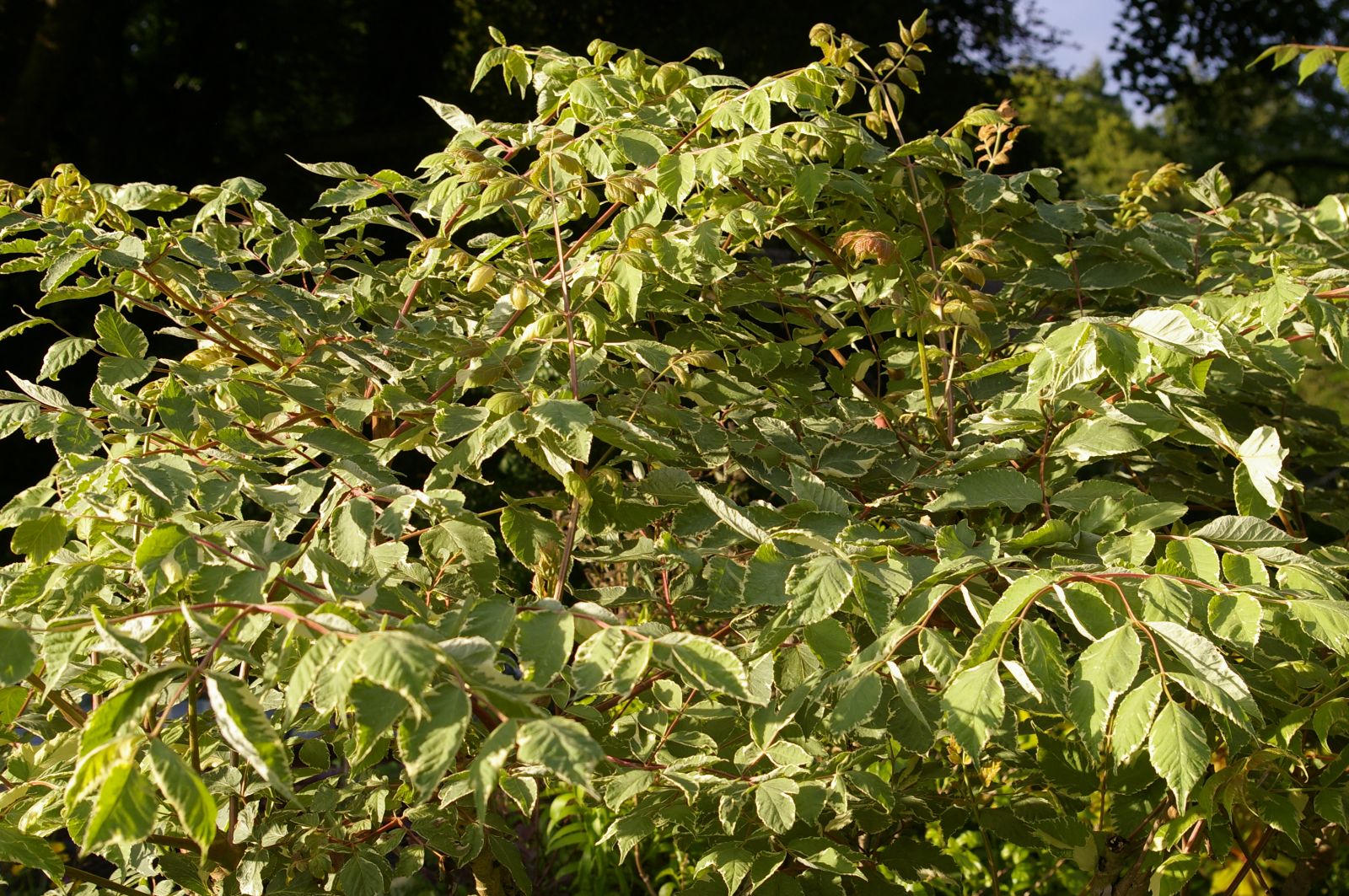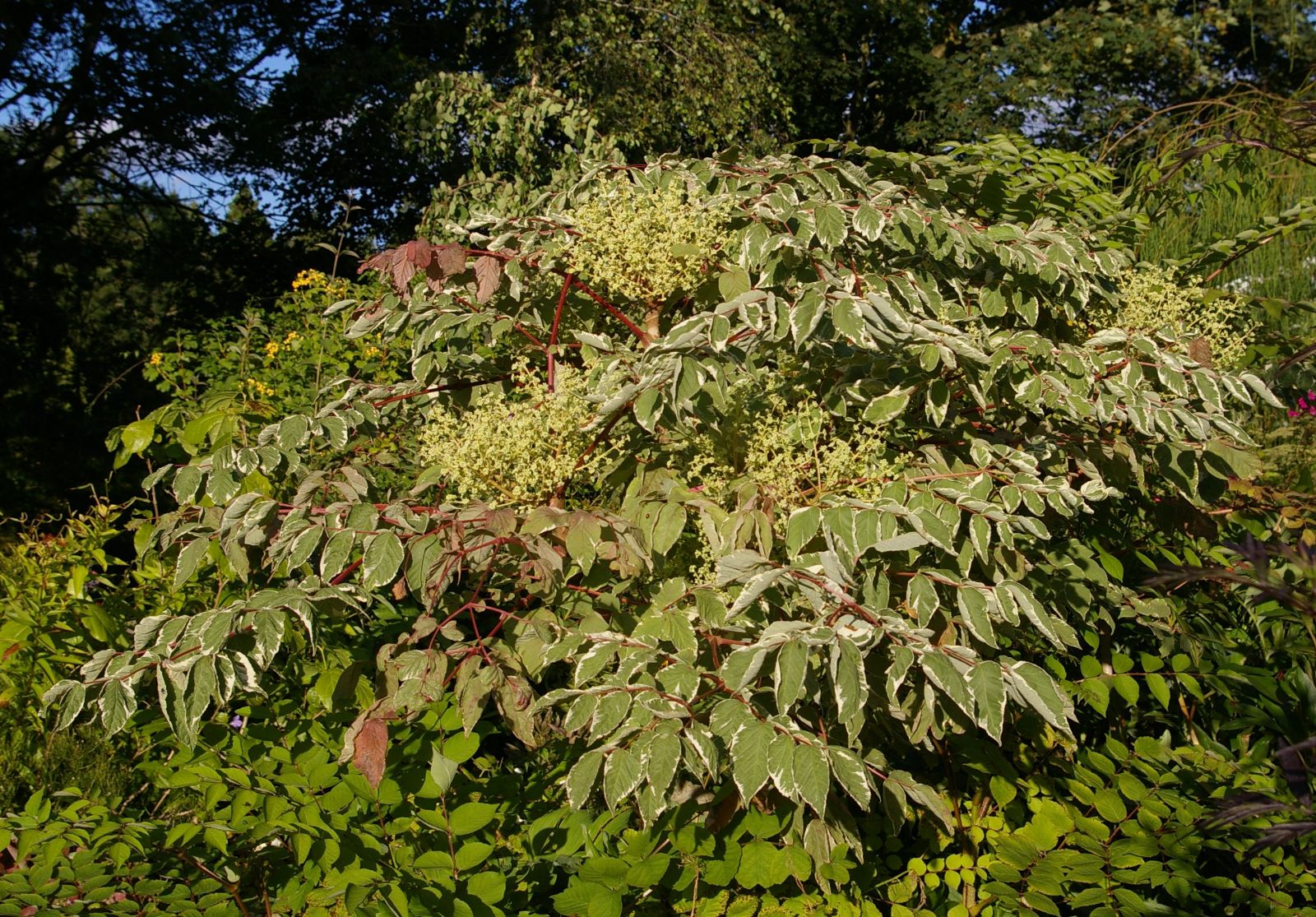Aralia elata
Credits
Article from Bean's Trees and Shrubs Hardy in the British Isles
Recommended citation
'Aralia elata' from the website Trees and Shrubs Online (treesandshrubsonline.
Genus
Common Names
- Japanese Angelica Tree
Synonyms
- Dimorphanthus elatus Miq.
- A. canescens Sieb. & Zucc.
- A. chinensis var. mandshurica (Maxim.) Rehd.
Other taxa in genus
A deciduous tree 30 ft or more high, with a few stout branches; more often a shrub renewing itself by sucker growths from the base; young growths very thick (over 1 in. in diameter), pithy, and armed more or less with spines. Leaves doubly pinnate, often 3, sometimes 4 ft long, two-thirds as wide; composed of numerous ovate, taper-pointed, short-stalked leaflets, from 3 to 5 in. long, 2 to 3 in. wide, toothed; dark bright green and slightly hairy on the veins above, paler and always downy beneath, often much so, and especially on the midrib and veins; stalks somewhat prickly. Flowers small, whitish, produced in August and September in numerous globose umbels 3⁄4 to 11⁄4 in. across, the whole forming a huge panicle 1 to 2 ft long and from half to nearly as much through; flower-stalks covered densely with down.
Native of Japan, Korea, Manchuria and the Russian Far East; introduced about 1830, and perhaps the finest of all hardy shrubs with foliage of its particular type. It is hardy enough in all but the coldest parts of the country, but still is seen at its best in the milder places. Near Falmouth there was a good specimen about 30 ft high, and as much in the spread of its branches, the main trunk 10 in. thick. In its ordinary shrubby state it makes an admirable ornament for a sheltered lawn, peculiarly effective at flowering time. Easily propagated by taking off small suckers or even pieces of root, potting them, and establishing them in heat.
A chinensis L
This species has a wide range in China from Yunnan to Manchuria, where it overlaps with A. elata. It differs from that species in the following group of characters: stems less spiny; leaflets finely and closely toothed; main axis of inflorescence longer, producing an elongated, conical panicle (in A. elata the main axis is scarcely developed and the inflorescence umbrella-shaped). The leaflets of A. chinensis are usually sessile, but this is not an altogether reliable character.In its typical form the species has the leaves downy beneath, and this is perhaps not in cultivation. But A. chinensis var. nuda Nakai, with leaves glabrous beneath (except on the veins), was introduced from China to the Arnold Arboretum in 1919 and thence to Kew in 1926. The plant there died in 1952 and has not been replaced.A spinosa L Hercules' Club
A native of the south-eastern United States, and very similar to A. elata. These two afford one of many instances of an extraordinary similarity between a plant native of N. America and another of N. Asia, which are yet not absolutely identical. In this case A. spinosa is distinguished by the leaflets being more glaucous beneath and much less downy, sometimes quite glabrous beneath, and by their being more distinctly stalked. The stems, too, are better armed with prickles. This American species is not so hardy and vigorous as the Asiatic one, and the two seen in juxtaposition are quite distinct. It is extremely rare in cultivation, but is represented in the Kew collection.Although these species make finer foliage when grown in rich than in comparatively poor soil, the latter is, I think, to be preferred if healthy, long-lived plants are desired. In rich soil the wood, always soft and very pithy, becomes especially so, and renders the plants very liable to injury by winter cold.'Aureo-variegata'
Leaflets with a broad and irregular margin of golden yellow.
'Pyramidalis'
Leaves rather smaller than in the type, and growing erect instead of spreading.'Variegata'
Leaflets irregularly margined, sometimes more than half covered, with creamy white; also known as albo-marginata. This form, and ‘Aureo-variegata’, are amongst the most effective and beautiful of all variegated shrubs. Both are increased by grafting on to the common form, but owing to their sparse production of suitable propagating material both remain rare and expensive.The plant grown as A. chinensis var. mandshurica (Maxim.) Rehd. is now considered to belong to A. elata and to be not even varietally distinct from that species. It was probably introduced from Manchuria by Maximowicz around 1860–5, and is said to be hardier than the introduction from Japan.A. elata was long grown in gardens as A. chinensis L., and not altogether wrongly so, for the two species are very closely allied, and if they were to be merged it would be under the latter name, which is by far the older.

